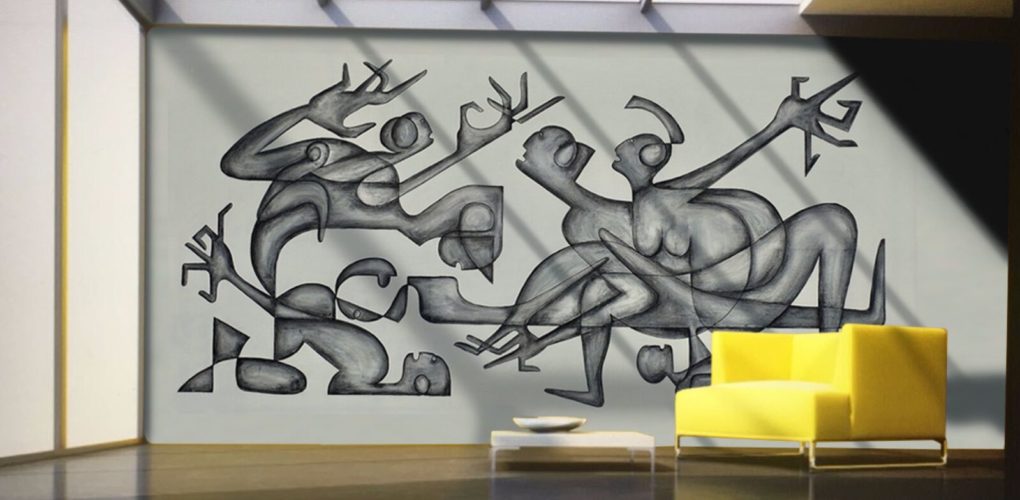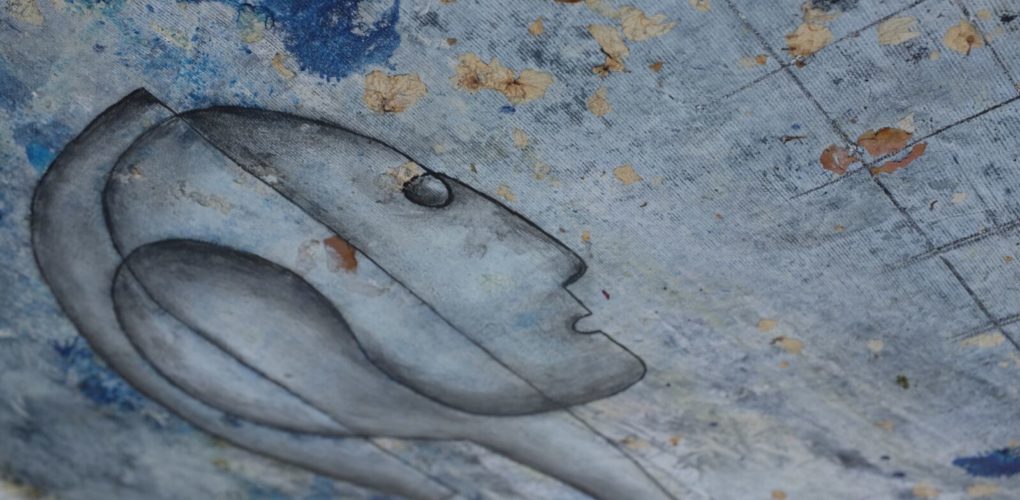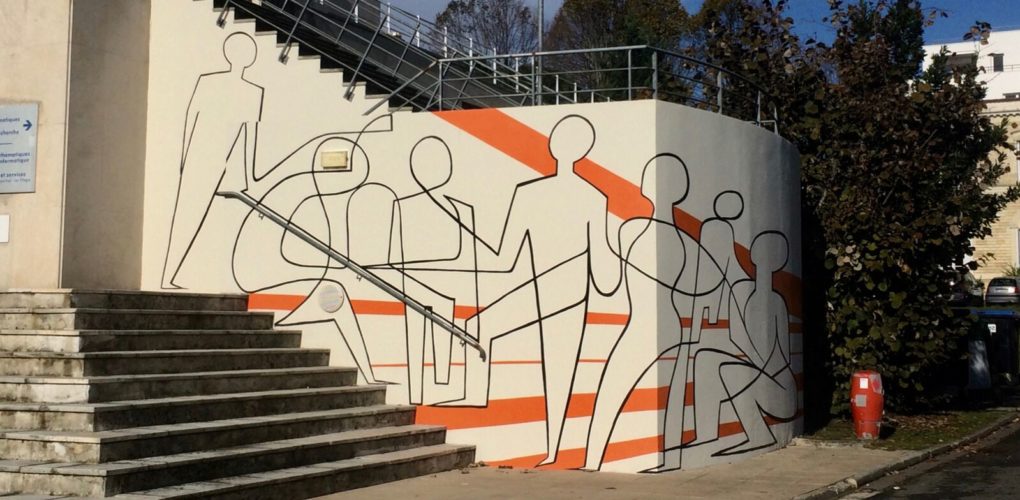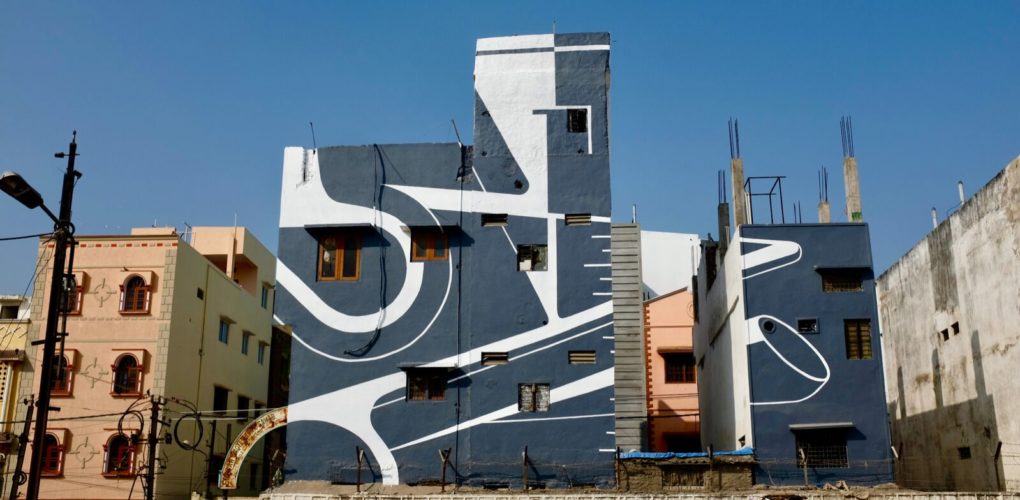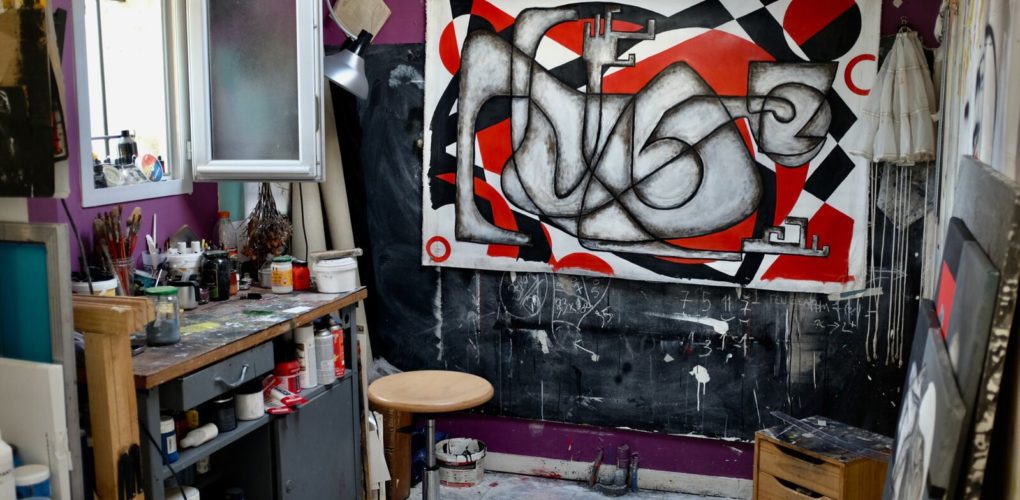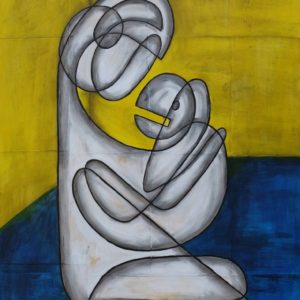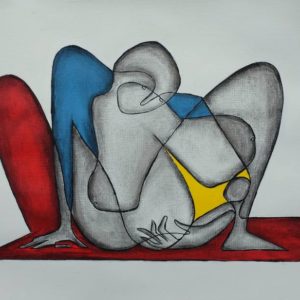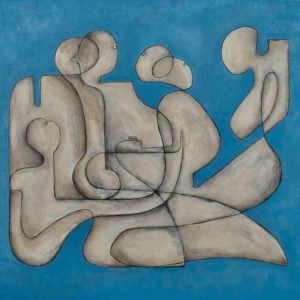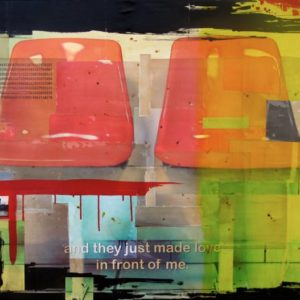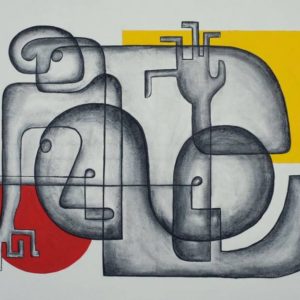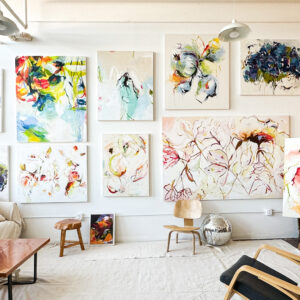Inside the Studio
 The Balanced Equation: JeanLuc Feugeas
The Balanced Equation: JeanLuc Feugeas
What are the major themes you pursue in your work?
As a mathematician, my research on entropy influences my plastic work. In this domain, it is known that disorder is not only the rule but is also the unique way of equilibrium. Tensions and resolutions, resulting from the different states of equilibrium and disequilibrium, induce circulations that I explore on the canvas or in the street. I see the experience of artwork as the capacity for everyone to question its own balance.
How did you first get interested in your medium, and what draws you to it specifically?
As far back as I can remember, I have always divided my time between drawing and music. Mathematics imposed itself. Painting came to me later. Music never left me. The use of a constraint as a concept has quickly become an important part of my artistic work.
How has your style and practice changed over the years?
Over time I figured out my approach is one of a researcher. Both as a scientist and as an artist. In equal parts. As a question of balance, probably. When I understood that, I turned the corner, and my work became more consistent with what I want.
Can you walk us through your process? Do you begin with a sketch, or do you just jump in? How long do you spend on one work? How do you know when it is finished?
I start with sketches on paper and then build a grid on the background. I draw points of strength and lines of force, leveraging techniques used by the Renaissance painters. With this first step, it allows me to set the rules. As strange as it sounds, it is the starting point of my reflection. It is, I think, the equivalent of what we call “education”. But, If I stop here, and, if I simply follow these rules, it would no longer have any interest for me. I would just be reduced to my education. I would only be what the others would have wanted me to be and not what I would have done of it (“Nous sommes ce que nous faisons de ce que les autres ont voulu faire de nous” – Jean-Paul Sartre). It is incredible how much the truth from this Sartre quote resonates for me. After that, everything really begins when tensions grow, when the forms are opposed and when the circulations appear. Behind the constraint of the single line, the idea is not to make a performance but to build a single unit. The line stays open during all the process. As long as it is not closed, the painting is not finished. It’s a kind of metaphor for the painting itself. When it’s done, I have the feeling of having completed the experience. To have solved it.
Sometimes, people who own my paintings contact me. This is very disturbing, because, you understand by listening to them, that the process is still going on, and even more, that I have nothing to do with this anymore. I am no more than the observer of their interpretations. You have to accept it.
If you couldn’t be an artist, what would you do?
An architect.
Who are some of your favorite artists?
Le Corbusier because he is an explorer and a precursor; Wassily Kandinsky because he is both a theoretician and a practitioner in art; Robert Rauschenberg because he knew that disorder is equilibrium; Pablo Picasso because he never stopped inventing.
What are some of your favorite experiences as an artist?
For several years, I have been in dialogue with my friend, a professor of oncology, on various topics. I suggested to him that we use an anamorphic mobile as a basis for creative thinking. This steel sculpture is formed of a single line whose meaning is double. The viewer turns around looking for a vantage point. The shape is, of course, three-dimensional and complex from everywhere around except from these two conjugate points. We used this object to illustrate the complexity of one’s relationship to the Other and in particular that of the relationship between a patient and a caregiver – both have two elementary visions of the same reality. These two basic forms act as bridges for a dialogue about a common concern.
What was the best advice given to you as an artist?
I will single out four:
- My music and harmony professor taught me the virtues of listening and observing – he illustrated his words with Mahler’s Fifth Symphony.
- My scientific mentor, a Russian professor of physics, taught me the importance of integrity in research and, as a consequence, in art.
- I understood the importance of the “accident” in art by listening to recordings of Gilles Deleuze’s lessons “Sur la peinture” delivered in 1981 at the Université Paris-VIII.
- Last, I feel very close to this quote from Thomas Hirschhorn: “My sculptural vocabulary is chosen so as not to exclude people, but instead to implicate them in my work – or rather, implicate them in the world. That’s what l try to do. That is why I work. That’s my political statement.”
I keep these guidelines as the cornerstone of my scientific and artistic process.
Prefer to work with music or in silence?
With music.
If you could only have one piece of art in your life, what would it be?
I would choose Guernica from Pablo Picasso and Barge from Robert Rauschenberg as two sides of a single coin for me.
Who are your favorite writers?
I am not really a regular reader but I enjoy:
- “Les mots” by Jean-Paul Sartre
- “Point and line to plane” by Wassily Kandinsky is one of my bedside books
- I regularly re-read “In the Studio of Alberto Giacometti” by Jean Genet
- I am pleased by reading or listening to conferences given by Gilles Deleuze, especially when he speaks about “lines of flight”. « My territories are out of grasp, not because they are imaginary, but the opposite: because I am in the process of drawing them. » Guattari et Deleuze — A thousand plateaus.
